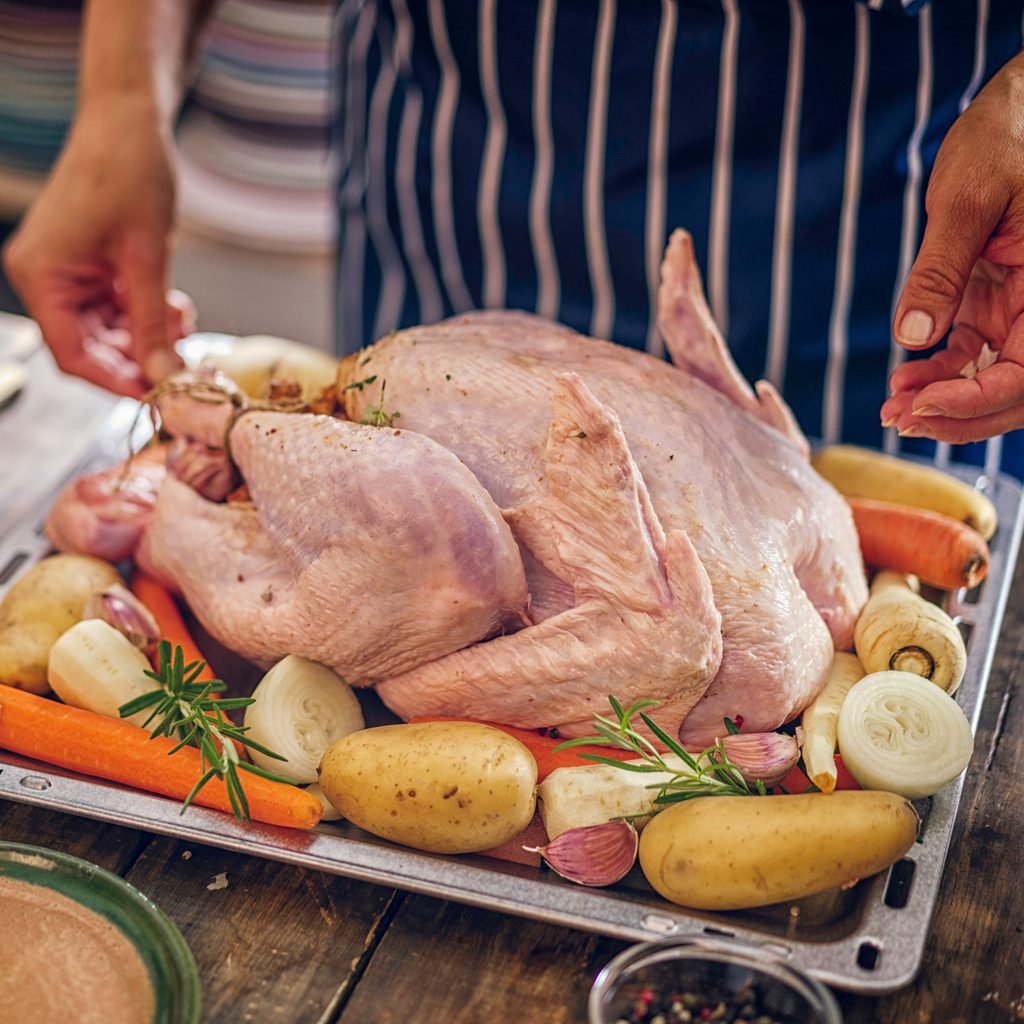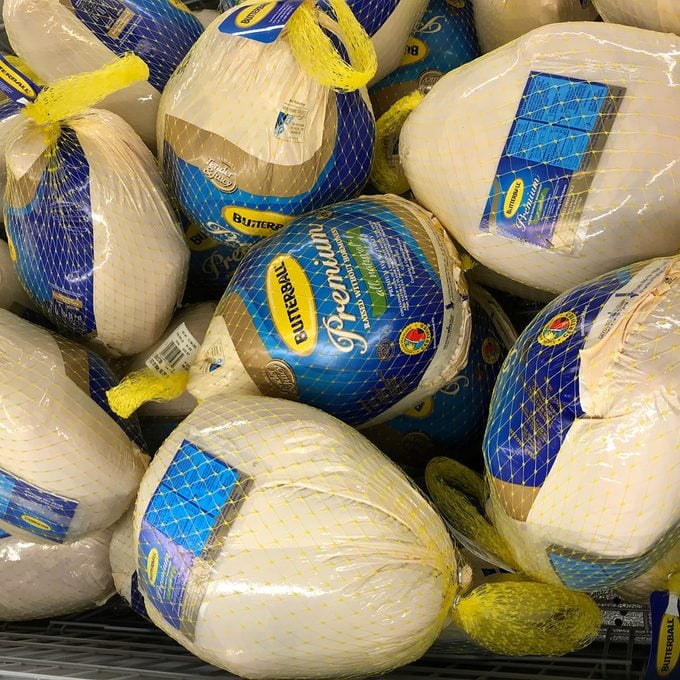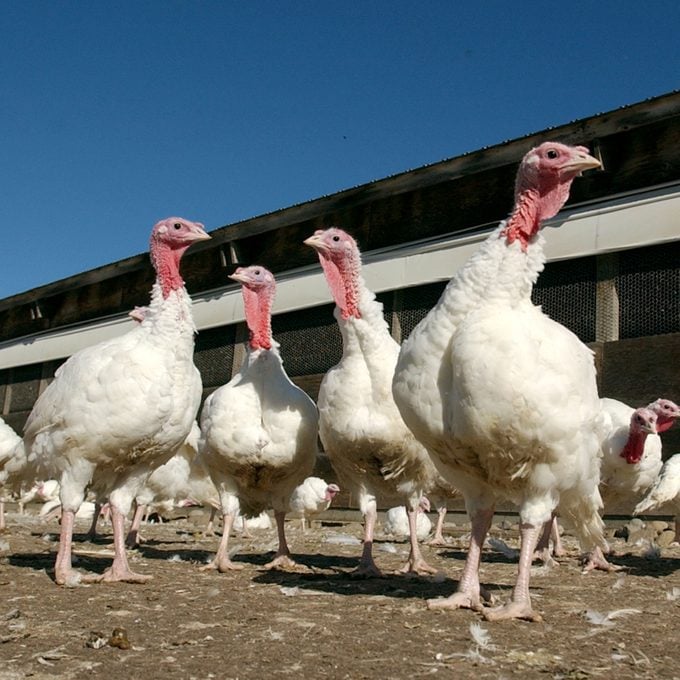What Is the Best Turkey to Buy for Thanksgiving?
Updated: Nov. 21, 2023

Have your Thanksgiving turkey shopping go off without a hitch with our tips on identifying the best turkey to buy for your holiday meal.
Our editors and experts handpick every product we feature. We may earn a commission from your purchases.
Thanksgiving is a holiday full of family, fun and lots of food. The centerpiece to Thanksgiving dinner, and in some ways the holiday itself, is of course the turkey. But if it’s your first time buying a Thanksgiving turkey or it’s just been a while since you’ve thought about what kind of turkey you’re going to get, all of the different types and labels can get confusing. To make things a bit easier, we’ve put together this glossary of common turkey types to help you find the best turkey to buy for your Thanksgiving celebration.
Fresh Turkey
A fresh turkey is one that has never been stored below 26°F, according to the United States Department of Agriculture (USDA), meaning at no time has the turkey been frozen or chilled to the point that it’s hard to the touch.
The “fresh” label alone does not indicate anything about how the bird was raised or processed. So, if you want to know if your turkey has or has not been raised with antibiotics, was minimally processed, has additives, is organic or anything else, there will have to be another label on the turkey packaging. Since “fresh” just indicates the temperature at which a turkey has been stored, always double-check the best by- or sell-by-date to ensure the turkey hasn’t been sitting at the processing plant or in the store for too long.
Like almost any food, a fresh turkey will have a slightly better flavor, texture and moisture level than frozen, but whether you’re able to detect the subtle difference during Thanksgiving dinner is up to your taste buds.
You can buy a fresh turkey at some large grocery chains, like Whole Foods, some local grocery stores, local co-ops or farms and even some online retailers, like D’Artagnan and Williams-Sonoma. Fresh turkeys tend to be a bit more expensive than frozen, and can range anywhere from $3-$10+ per pound. Whichever purchase option you go with, plan ahead! Give local grocers, farms and co-ops a call to check that they’re selling fresh turkeys and ask about pre-ordering. Place any online orders several weeks out. If you’re going to wing it, the best day to buy a fresh turkey will be the Tuesday before Thanksgiving for peak freshness.
After you get your fresh turkey home, it should be stored in the refrigerator until about an hour before you plan on preparing and cooking it, so make sure you have plenty of shelf space. Fresh turkeys are pretty much ready to be roasted or fried right away as they don’t need time to defrost. Check out these other tips for picking out the right turkey, including how many pounds you’ll need.
Frozen Turkey

Frozen turkeys are birds that have been stored at or below 0°F. These are the turkeys you’re probably the most used to seeing at the store; wrapped in an air-tight layer of plastic and rock-hard. While frozen turkeys are usually sold, well, frozen, there are some frozen turkeys that are sold defrosted. These are typically labeled as “previously frozen.”
Like a fresh turkey, the label “frozen” does not indicate anything about the way the turkey was raised or processed beyond the temperature it was stored at. So, keep an eye out for additional labels if you want an organic, free-range or antibiotic-free turkey.
Most frozen turkeys are flash-frozen, meaning they’re frozen very quickly to preserve the bird’s texture, flavor and ability to retain moisture. Most of your dinner guests won’t be able to tell the difference between a frozen and fresh turkey.
Frozen turkeys tend to run about $2 a pound, though that can fluctuate depending on the time of year, sales, the way the turkey was raised and processed and where you’re purchasing it from. You can buy a frozen turkey at just about any grocery store around Thanksgiving or online retailers, though it’s always a good idea to order ahead.
Since frozen turkeys are completely frozen through, you’ll need to know how to defrost a turkey before trying to cook it. A good rule of thumb is to let the turkey thaw in the fridge for 24 hours for every four pounds. Meaning, if your frozen turkey is 20 pounds, it’ll take around five days to defrost. If you do forget to take your turkey out of the freezer ahead of time, rest assured you can roast a frozen turkey.
Self-basting/Pre-basted Turkey
Basted, self-basting and pre-basted turkeys are turkeys that have been injected with a solution while being processed. The solution is usually a mixture of fat, water, salt, sugar, seasonings and/or “other substances” that is added to increase the flavor and moisture content of the turkey. The exact ingredients of the basting solution must be disclosed on the turkey’s label, as well as the total weight percentage of the solution. For turkeys with bones, like a whole Thanksgiving turkey, the solution can be up to 3% of the turkey’s total weight. For boneless turkey, the solution can be up to 8% of the piece’s total weight.
There are several upsides to a pre-basted turkey. The solution acts as a brine which bumps up the turkey’s ability to retain moisture while roasting and seasons the bird from the inside out, for a more juicy and flavorful final product. It also allows you to skip the brining step at home, which can be messy and take up even more room in your fridge. Plus, it’s usually the more cost-effective turkey option.
Pre-basted turkeys do have some downsides, though. For many, the inability to determine what exactly is going in and on their turkey is a non-starter. If you’re someone who likes to make their own brine, doesn’t want a turkey with added ingredients or is watching their sodium levels, it’s best to pass on a pre-basted turkey. Prepare the best tasting Thanksgiving bird with these tips on how to season a turkey.
Natural Turkey
On the flip side, natural turkeys are made without any artificial colors, flavors or ingredients, chemical preservatives or synthetic ingredients and are no more than minimally processed (meaning the raw poultry is not “fundamentally alter(ed),” according to the USDA).
The term natural or all-natural doesn’t indicate anything about how the turkey was raised, however. For an organic, free-range or antibiotic-free turkey, look out for additional labeling.
Also, a quick note about antibiotic- and hormone-free turkeys; per the USDA, all hormones are prohibited when raising turkeys, meaning every turkey sold in the US is hormone-free. So, if a turkey’s packaging touts that it is hormone-free, know that is just marketing trying to upcharge you. Also, any turkey that receives antibiotics in its lifetime must go through a withdrawal period before it is killed and processed, so there are no longer antibiotics in the bird.
Since these turkeys are just the turkey and nothing else, they’ll need to be properly brined and seasoned for a flavorful and moist dinner. Not to worry, we can show you how to brine a turkey the quick and easy way.
Kosher Turkey
A kosher turkey is one that has been properly “prepared under Rabbinical supervision”. In order to be kosher, turkeys are slaughtered, inspected, cleaned, deveined and trimmed according to kosher processing rules. Turkeys are then soaked in cold water for half an hour, taken out and rubbed with coarse salt which is left on for an hour before being washed off and soaked again. This washing and salting process removes blood from the turkey and seasons it. (Here’s more on what kosher really means.)
Since kosher turkeys are already salted, they don’t need to be brined or prepared extensively. Just add your choice of seasoning and roast for a tender and flavorful bird. Like a pre-basted turkey, since you can’t control the amount of salt the turkey contains, it isn’t the healthiest choice for those following a low-sodium diet.
If you’re not able to find kosher turkeys at a local grocery store or deli, there are several online retailers that sell them, including Aviglatt and Amazon.
Free-range and Cage-free Turkey

A free-range turkey is one that has had “continuous, free access to the out-of-doors for over 51% of their lives,” per the USDA. This time includes the winter months, so farms in the northern half of the US need to accommodate that access when it’s cold out. When submitting their labels for approval by the USDA, farmers must include a description of the turkey’s quarters, which is confirmed by a third party, to ensure they qualify for the “free-range” distinction.
Like with other labels, free-range does not indicate anything else about how the turkey was raised or produced. Since free-range turkeys have outdoor space and require more space to raise, they tend to run a bit more expensive than non-free-range turkeys.
Cage-free turkey is a bit of a misnomer. The vast majority of turkeys in the United States are raised in large, barn-like structures rather than cages, making them cage-free. Cage-free is more applicable in differentiating the way that chicken eggs are collected, rather than the way the poultry for eating is raised. Here’s more info on the difference between cage-free and free-range eggs.
Heritage Turkey
Heritage turkeys are a strand of turkey breeds that more closely resemble wild turkeys and those that Native Americans hunted and enjoyed long before the first Thanksgiving. These modern turkeys are raised without antibiotics and in a more natural way than industrially-raised turkeys, which were specifically bred to grow the most amount of meat in the shortest amount of time. This means heritage turkeys are pasture-raised on a smaller farm, rather than an industrial turkey farm. According to The Livestock Conservancy, there is specific criteria a turkey must meet to be considered heritage: mate naturally without human intervention, be a product of natural mating for at least two generations, are able to successfully breed for longer, be able to genetically withstand a pasture-raised lifestyle and have a slow growth rate to market weight.
Because heritage turkeys are bred in a more natural way, they may be slightly uneven. Meaning one breast, leg or wing could be larger than the other, which can require a bit more attention when cooking to avoid anything from drying out.
All these differences in breed and lifestyle lead to a turkey that’s not exactly what you’re used to. Heritage turkeys are overall a bit smaller and have less breast meat and more meat around the legs and thighs resulting in a white-to-dark meat ratio closer to 50:50. Other turkeys have a white-to-dark ratio of about 65:35. Heritage turkey meat is tender and very flavorful, tasting more like a wild turkey than it’s industrially-raised counterpart. For some, this natural flavor can come off as slightly gamey.
Heritage turkeys are the most expensive type of turkey you can get. Because they’re less common, take longer to come up to weight, require more space and are generally a bit fussier to raise, they’re significantly more expensive than a typical turkey. There’s still a wide range in prices depending on where and when you buy it, the brand and other shopping factors, but you can expect a heritage to run about $8-15+ per pound. This extra price is worth it to some for a bird that is raised in a more humane and sustainable way. Not to mention it tastes great!
Those interested in purchasing a heritage turkey should first check with their local farms, co-ops and farmers markets to see if they sell these turkeys, or have advice on where to find them. If you don’t have these options near you, you can visit Heritage Foods, which is the go-to site for mail-ordered heritage turkeys, or D’Artagnan to place an online order for delivery. Still not sure? Here’s a handy guide to buying a small turkey: how much turkey to buy, where to shop and how long to cook a smaller bird.
So, What Is the Best Turkey to Buy?
Now that you know all about the different types of turkeys, you can decide which one is best for you. But no matter which one you choose, you’ll need to know how to cook a turkey the right way!
